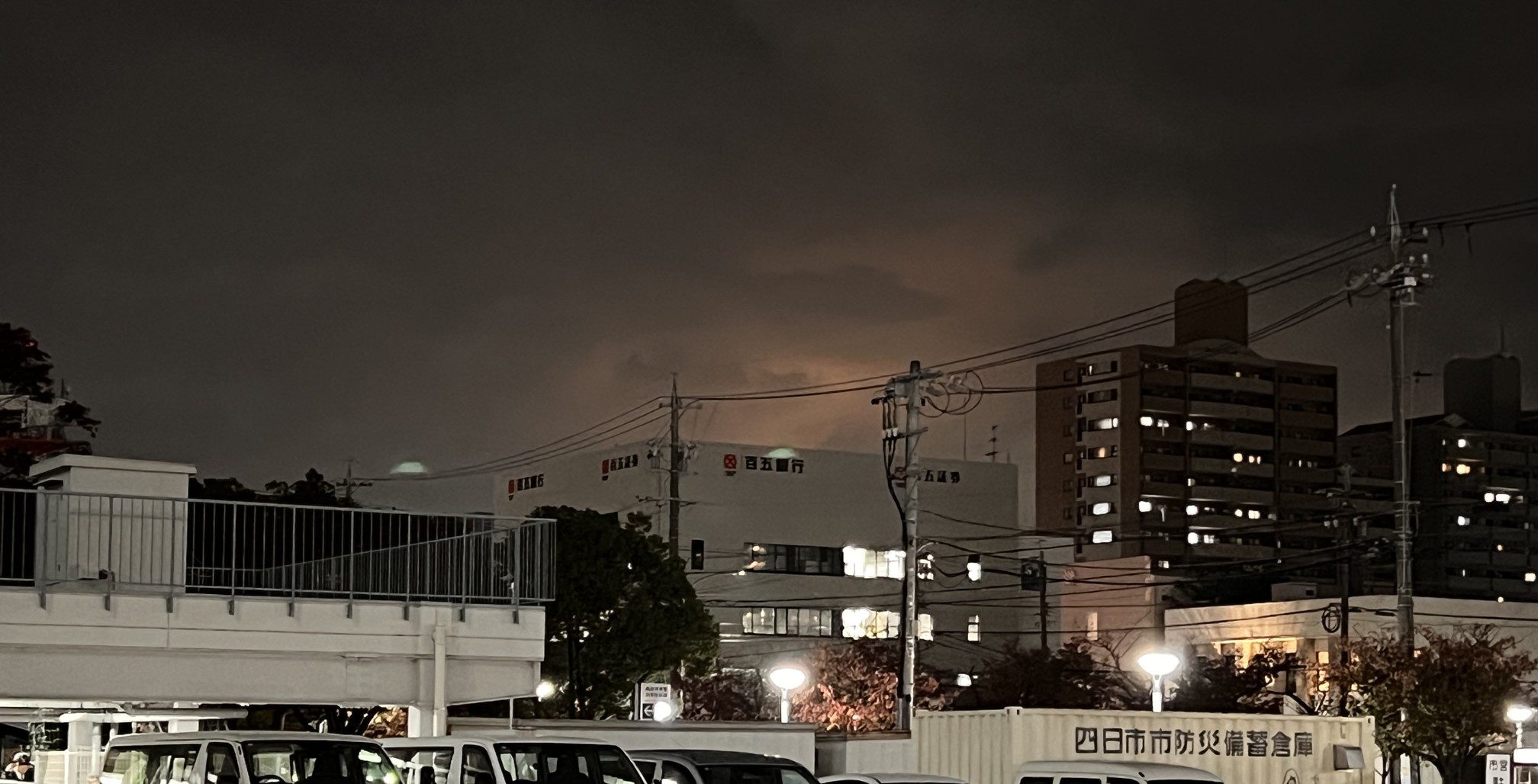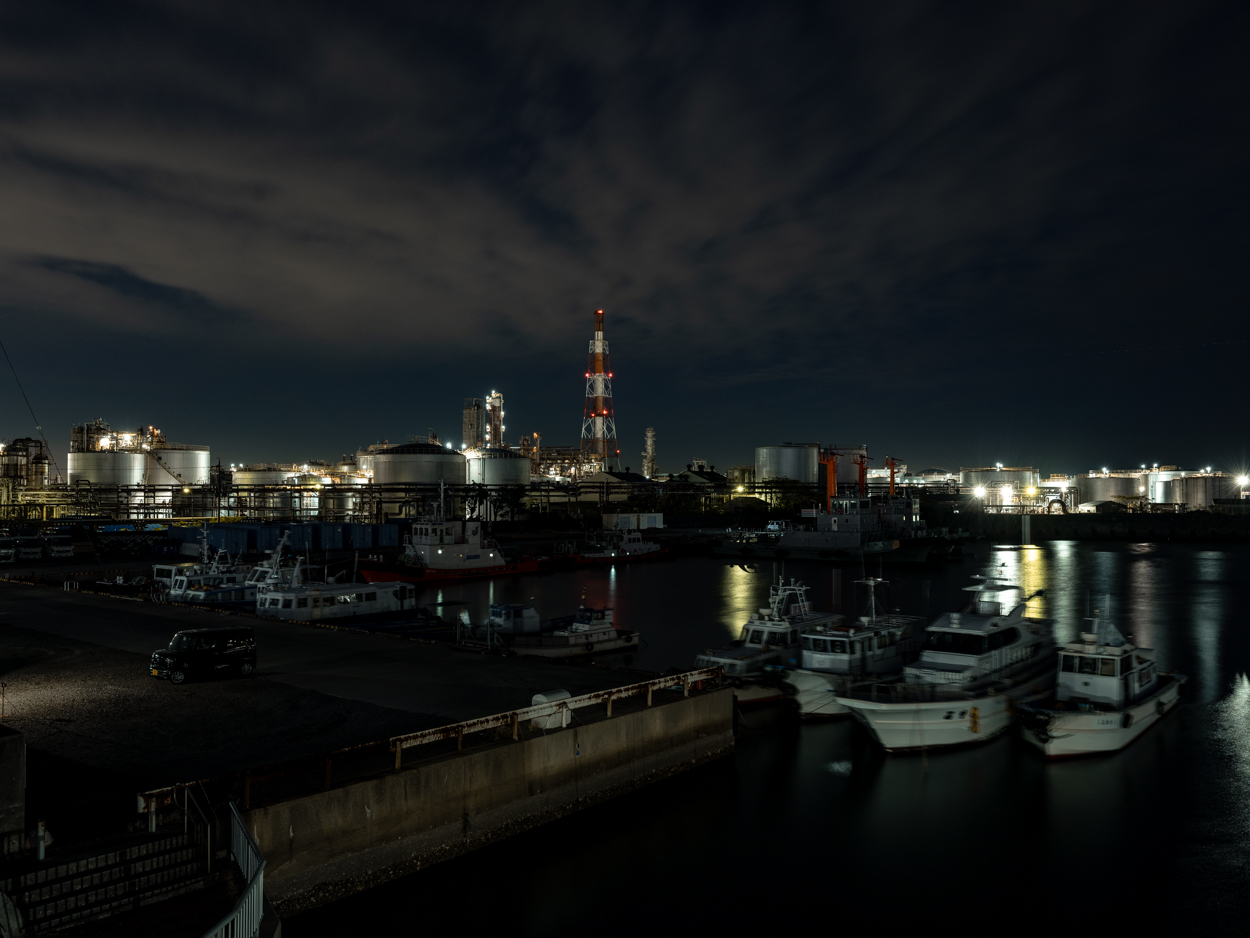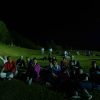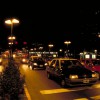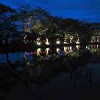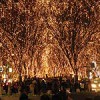2024.11.21-11.22 Shunichi Ikeda + Yuta Shibata
Yokkaichi has developed as an industrial city. The striking contrast between its dazzling factory nightscape and the increasingly organized city center stands out. We conducted a survey of the urban lighting where industry and daily life coexist.

■About Yokkaichi
Yokkaichi has a long history, having developed as a port town facing Ise Bay. During the Edo period, it prospered as a post station along the Tokaido route. The city’s name originates from the markets that were held on days ending in “4.”
After World War II, Yokkaichi grew as an industrial city with the construction of a petrochemical complex during Japan’s period of rapid economic growth. However, air pollutants emitted from the complex caused a serious pollution-related illness known as Yokkaichi asthma.
Today, the city has regained a comfortable living environment. Residential areas, shopping streets, and everyday life now extend right alongside the industrial zones.
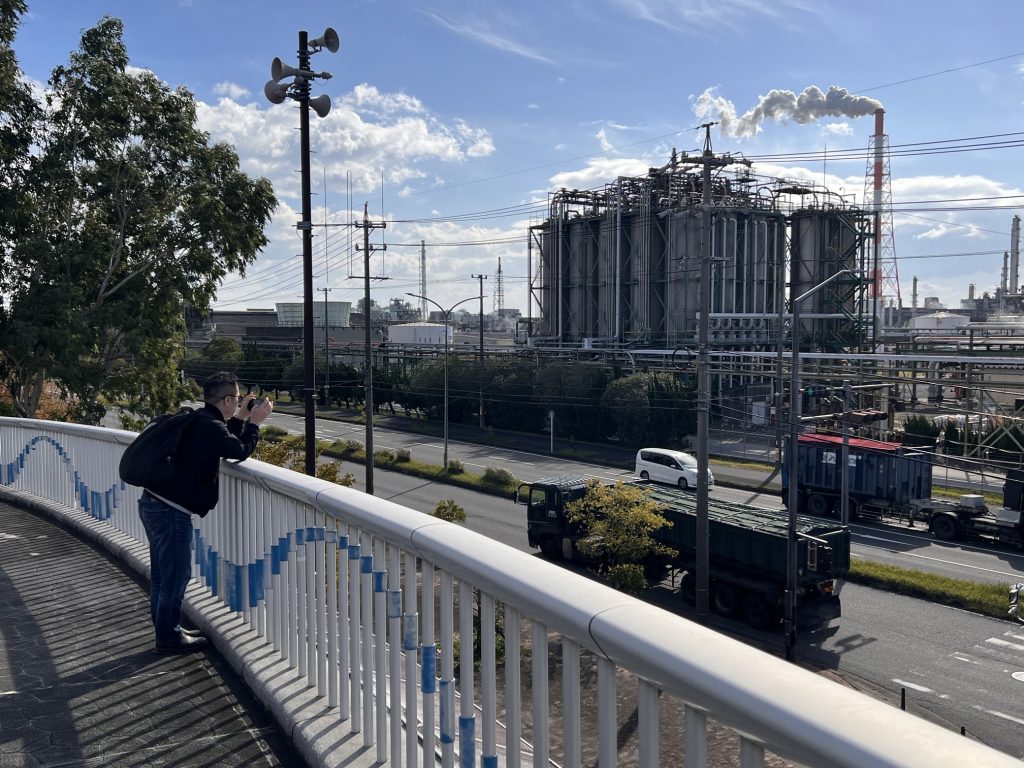
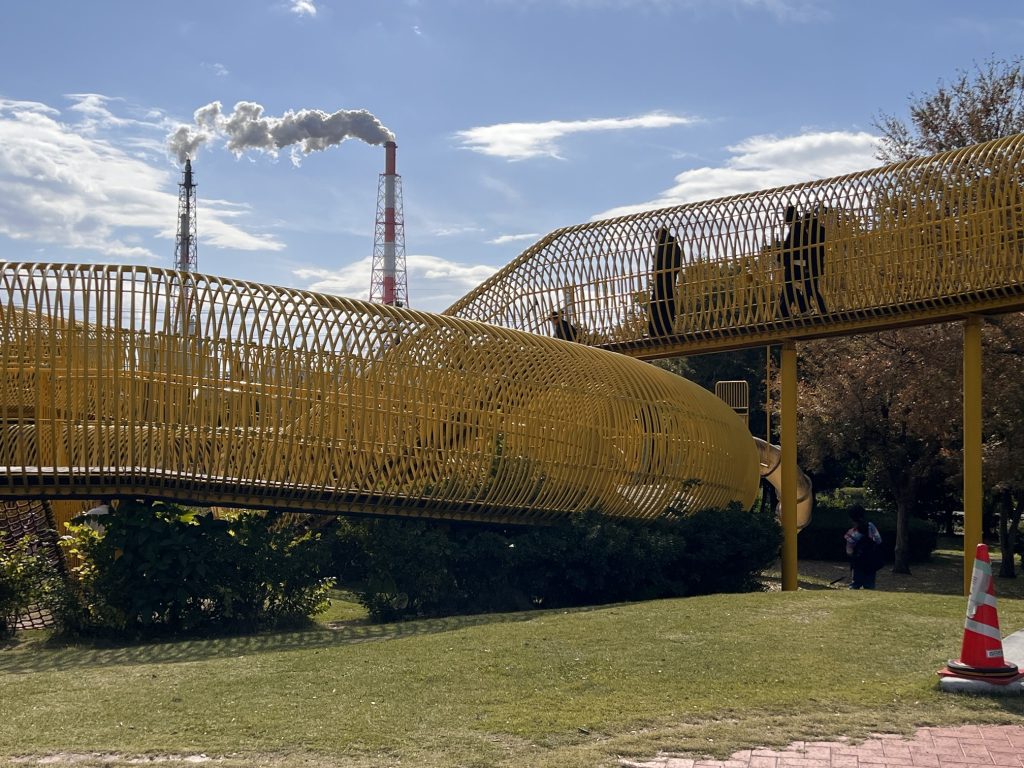
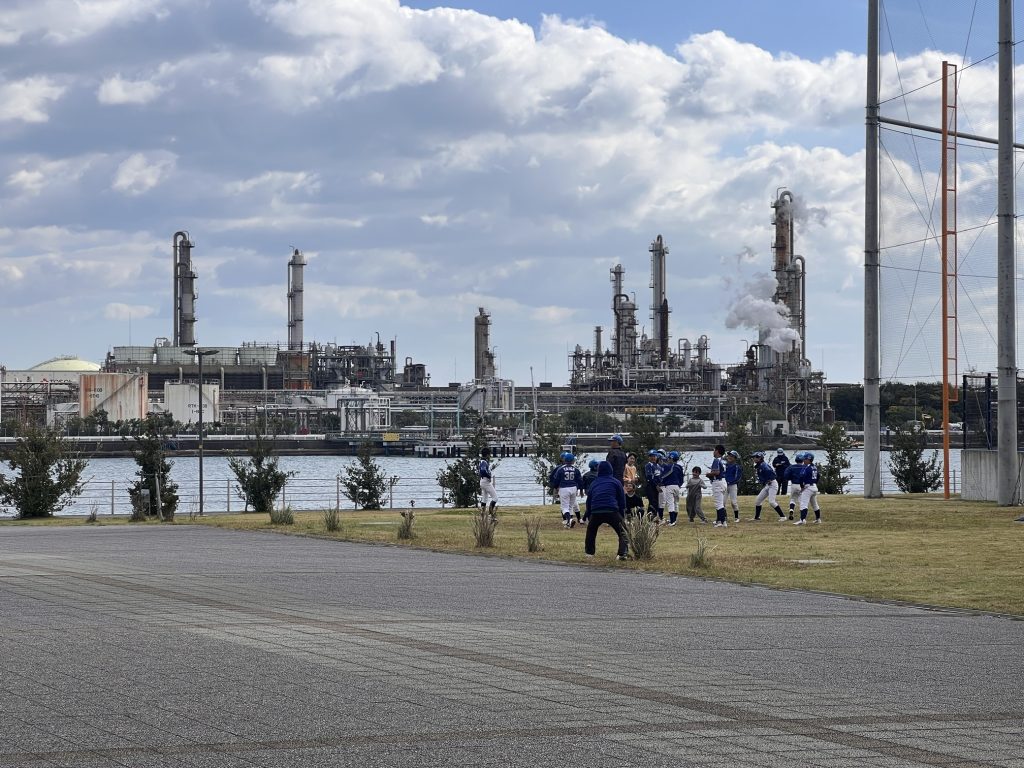
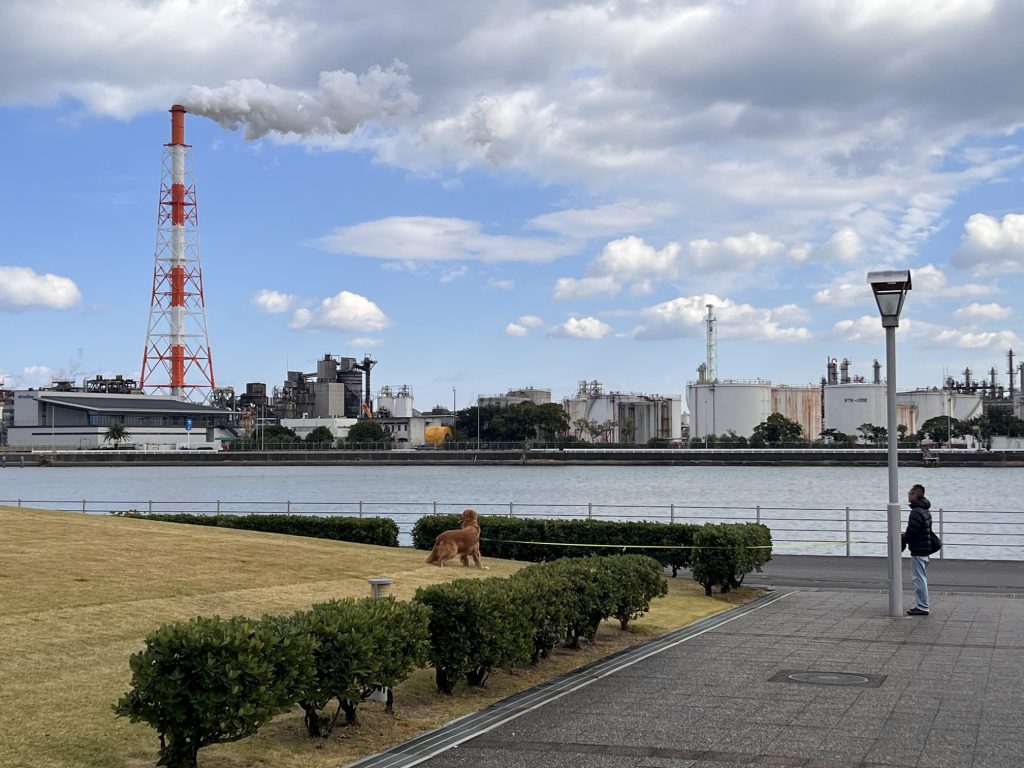
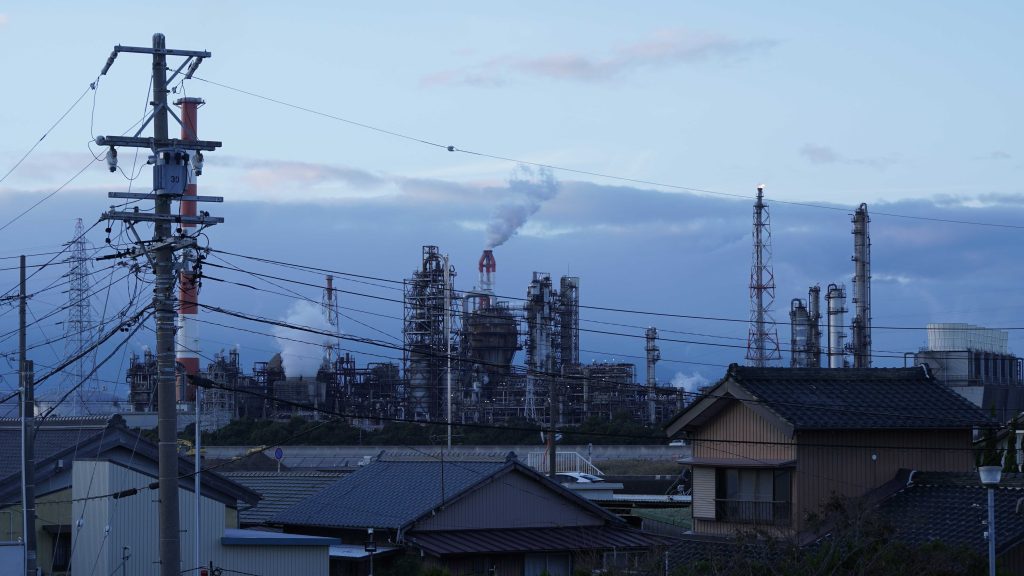
■3D Factory Nightscape
Yokkaichi, with its history of industrial development, began drawing attention during the early 2000s factory nightscape boom. The expansive factory nightscape of the Yokkaichi petrochemical complex, which stretches about 10 kilometers north to south, is counted among Japan’s five greatest factory nightscapes.
What makes it especially unique is that the nightscape can be viewed from the sky, land, and sea—earning it the nickname “3D Nightscape.” Particularly photogenic views of the factory nightscape have gained significant popularity. From the perspective of the Lighting Detectives, we conducted a survey of Yokkaichi’s factory nightscape as part of our exploration into lighting in industrial cities.
■Luminaires in the Factory Nightscape
Most factory nightscape photos commonly seen in the media capture entire buildings or cityscapes, but opportunities to closely observe the actual lighting equipment used at factories are rare.
While there is a common image of orange sodium lamps being used, our on-site observations revealed that white LED light sources and fluorescent lamps are actually more prevalent. The lighting equipment lacked any beam control features, likely because safety and work efficiency are prioritized.
Since there’s little consideration for glare or light pollution, the lighting felt extremely intense when viewed up close. When approaching the factories, we found that the lighting fixtures had no optical control, and the white light appeared overwhelmingly bright.
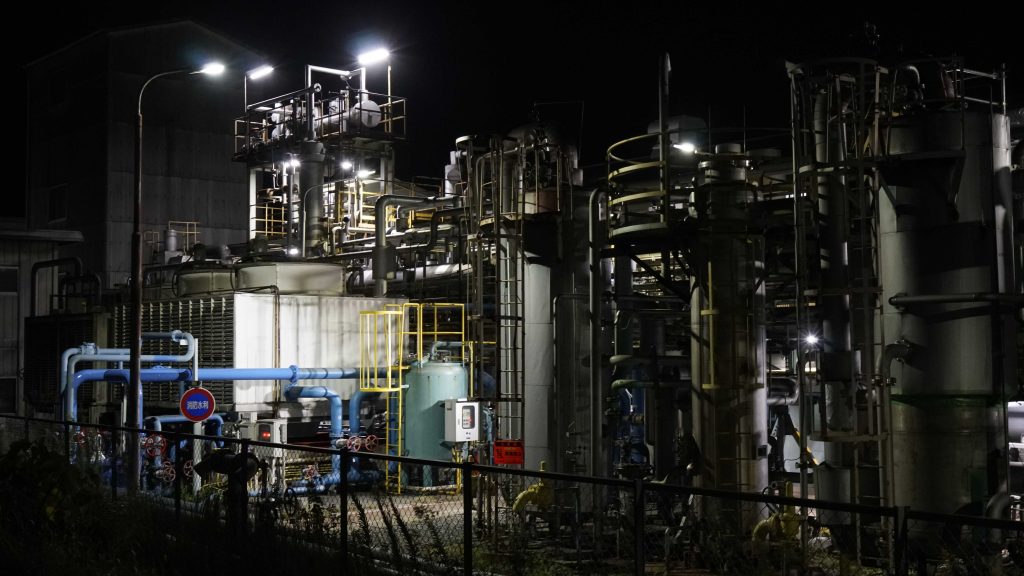
■The “Extraordinary” Becomes Ordinary
Lighting installed throughout the area casts a stark glow over the factories, emphasizing their distinctive shapes and highlighting the unique character of each facility. In photos, these scenes often appear to create a surreal, almost fantastical world. However, seeing the nightscape in person revealed both awe-inspiring views like those captured in photos, and others that felt more like selectively framed scenes designed for visual impact.
Factory nightscapes are often described using words like “fantastical” or “extraordinary,” evoking a sense of wonder far removed from everyday life. Yet in reality, they felt more like part of the ordinary cityscape—seamlessly blending into their surroundings.
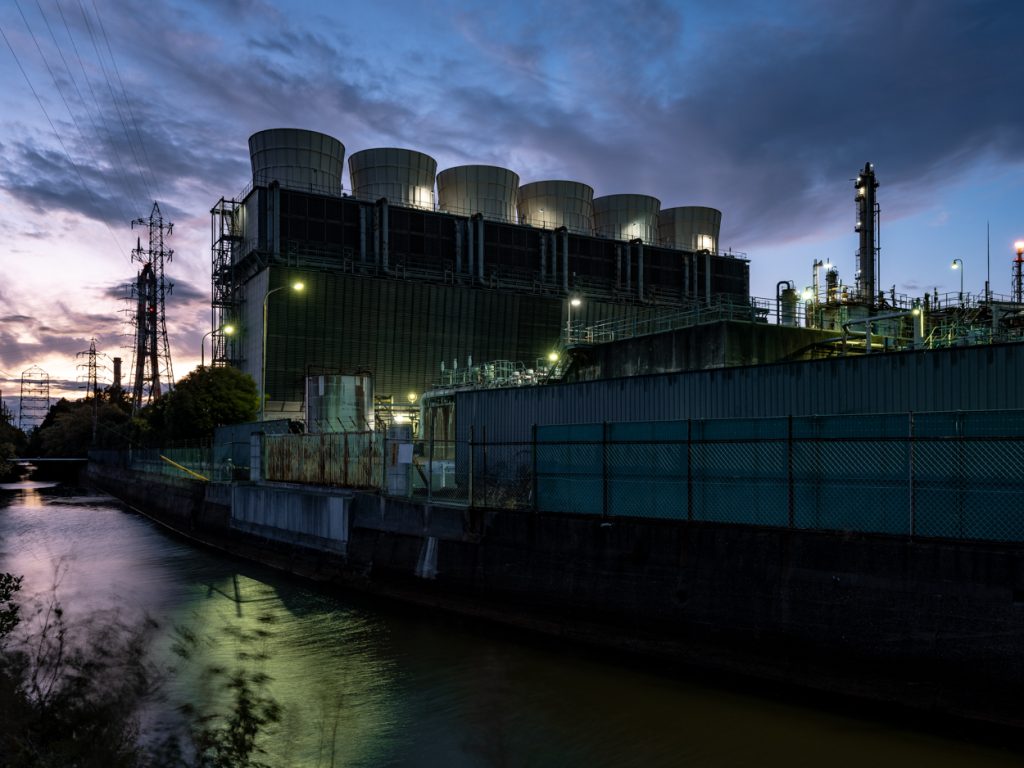
of the Shiogama area

is illuminated by spotlights
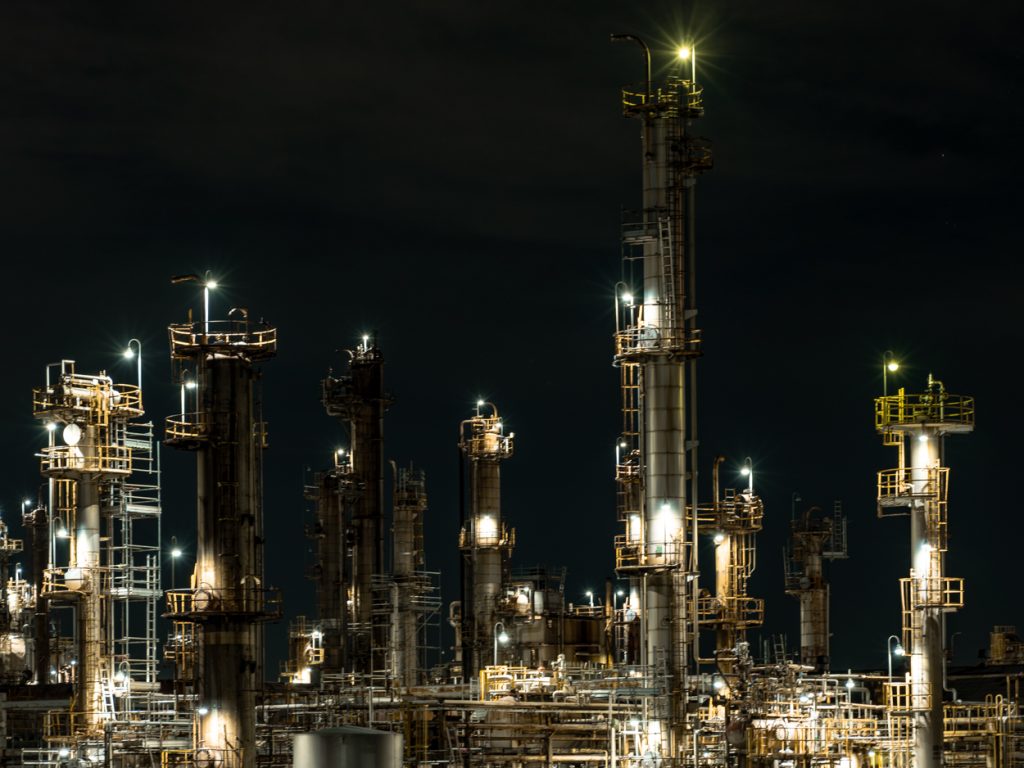
the factory nightscape
■Let’s Go See the Factory Nightscape!
There are countless visually striking photos of factory nightscapes on the internet and social media, but visiting in person revealed charms that can’t be captured in pictures. One such example is the industrial road Inaba Port Line, which opened in 2018.
The dramatic S-curve of the road and the reflection of the factory nightscape on the water are undeniably photogenic. But what stood out even more was the subtle charm of the blinking red, yellow, and green indicators arranged around the support pillars—their gentle movements had a kind of cuteness that simply doesn’t come across in photos.
■A Glittering Overhead Nightscape
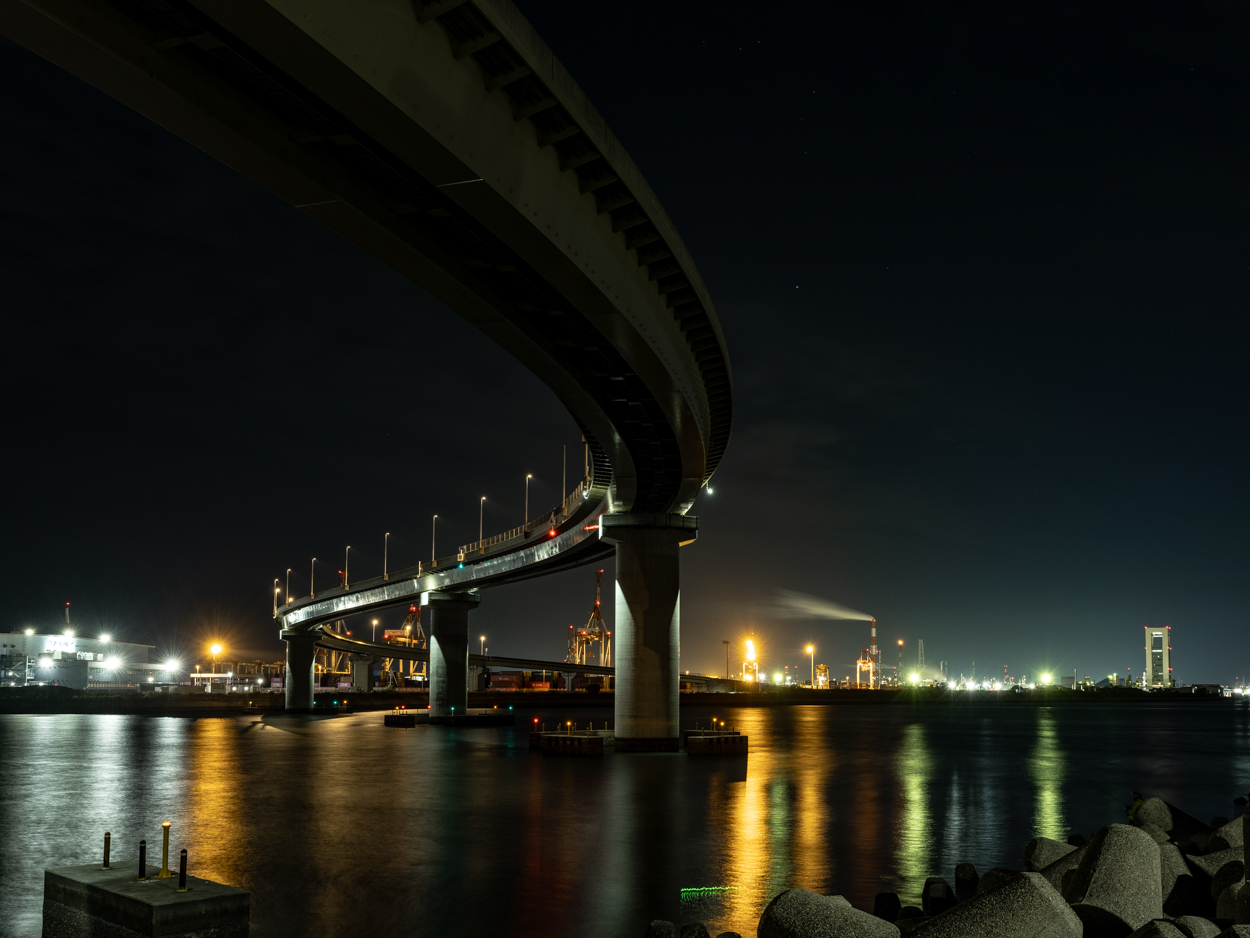
We observed the nightscape from elevated viewpoints at the Yokkaichi Port Building and Tarusaka Park Observatory.
The observation deck of the Yokkaichi Port Building, standing about 100 meters tall, is specially equipped for nightscape viewing—it offers black cloths to prevent reflections for photography and dims its lights ten minutes before closing at 9:00 PM.
In most overhead nightscapes, the brightness typically fades into the distance. However, the factory nightscape in Yokkaichi—stretching across a 10-kilometer-long complex—maintains a continuous glow that extends far into the horizon. Lighting fixtures without beam control cast light in all directions, contributing to glare and light pollution. Ironically though, this kind of lighting, which might be considered uncomfortable up close, creates a stunning nightscape when viewed from above, seemingly captivating all who see it.
From the observatory in Tarusaka Park, we could view both the Yokkaichi petrochemical complex near the sea and the inland city area at the same time. While the view wasn’t as sharp to the naked eye as in photographs, the stark difference in brightness between the complex and the city was unmistakable—clearly demonstrating the sheer intensity of the factory lighting.
What stood out most in Yokkaichi’s overhead nightscape was the horizontal divide of light and shadow, separating the complex from the cityscape.
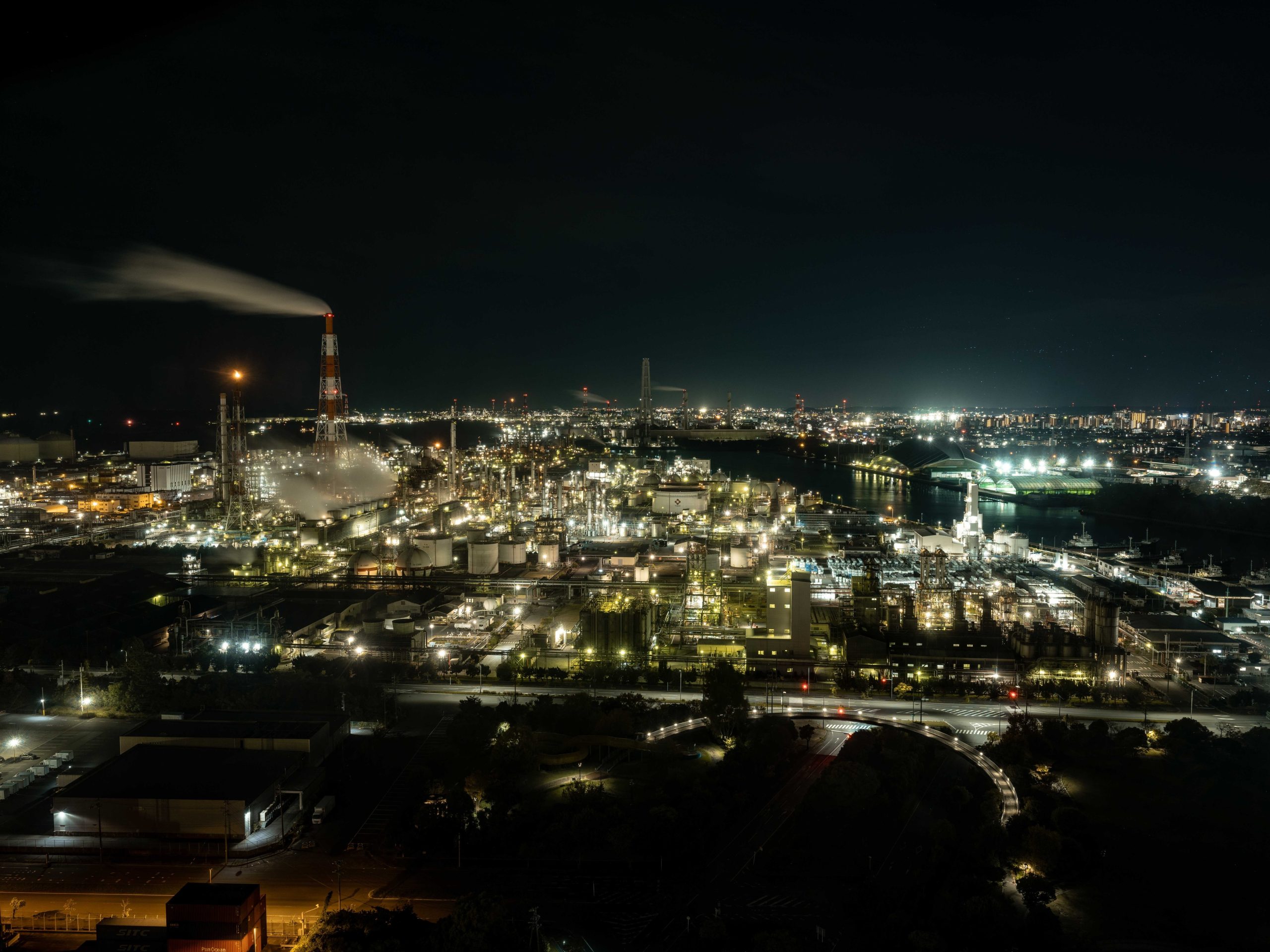
Each light is intense and stretches for about 10 kilometers
■Lighting Environment in the City Center
We visited the city center around Kintetsu Yokkaichi Station. The area had undergone redevelopment, and along Chuo Center Street, improvements were being made to the bus terminal and circular pedestrian bridge.
When heading west from the station, two rows of streetlights, one for the road and one for the sidewalk, stand in continuity. The color temperature was unified at 3000K, creating a cohesive landscape throughout the space. The lighting was thoughtfully planned, and I was surprised by how a calm lighting environment was maintained around the busy station area, while still ensuring the necessary illumination for the roadway.
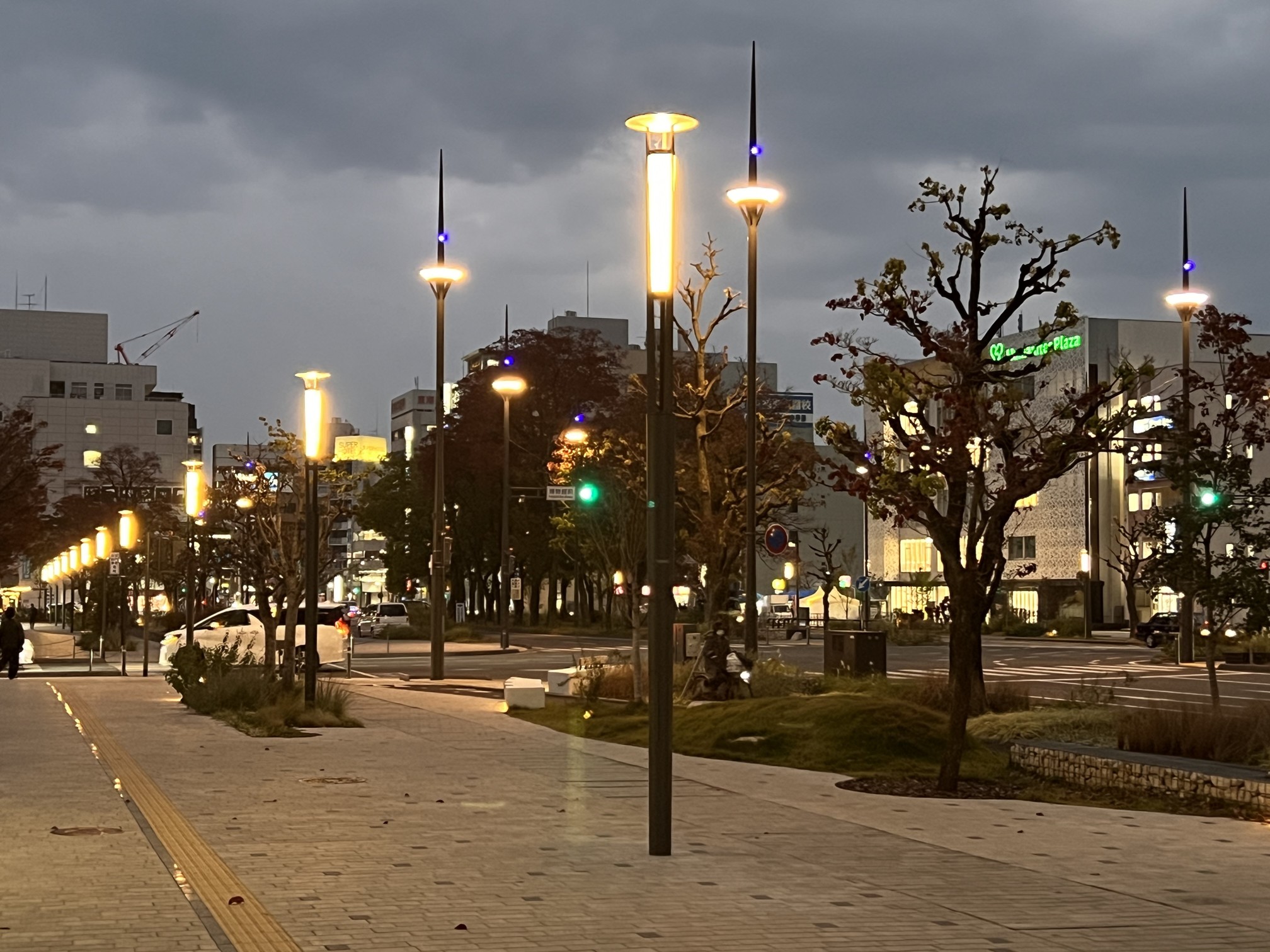
On top of the futuristic-looking pole lights, I noticed lights that resembled indicators, glowing green when viewed from the east and purple when viewed from the west. I was unsure of the purpose of these indicators and was slightly concerned that they might be mistaken for traffic signals.
The east side of the station appeared to be still under development. Compared to the well-developed west side, there were more noticeable imperfections. These included streetlights with one bracket not lit, mismatched color temperatures of the streetlights, and a broken shade on one of the lights. I hope these issues will be addressed in future improvements.
■Yokkaichi Ichibangai Shopping Street
We walked through the bustling Yokkaichi Ichibangai shopping street, the liveliest area in the city. When we first visited the main street during the day, it was devoid of people. The soft natural light filtering down from the arcade roof and the vast, empty space gave off an oddly mismatched sense of calm and eeriness. However, when we returned after dark, the street had transformed into a vibrant, almost theme park-like spectacle.
At the far end of the street, I discovered arcade pillars adorned with a variety of lighting—floodlights for color lighting from above, spotlights illuminating the ceiling, spotlights lighting the floor, and bracket lighting. The street, adorned with lights just before Christmas, created a lively and cheerful scene with people bustling about. In the adjacent Suwa Park, an illumination event was taking place. Though imperfect and scattered in places, the lighting truly brought the area to life. (Yuta Shibata)
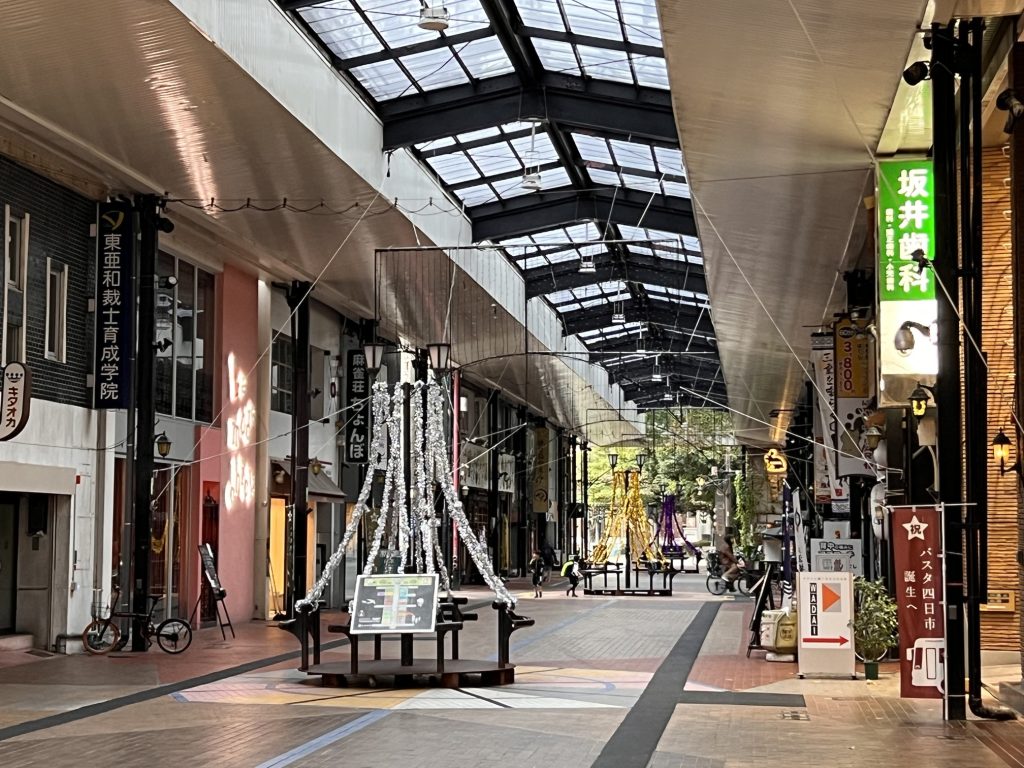
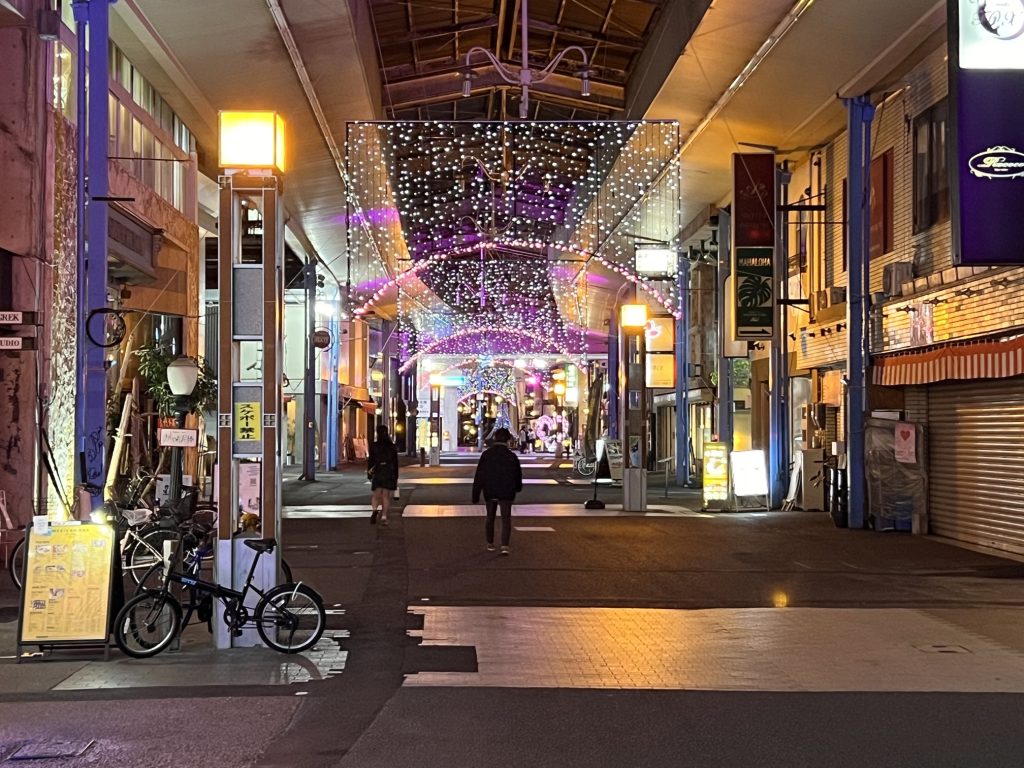
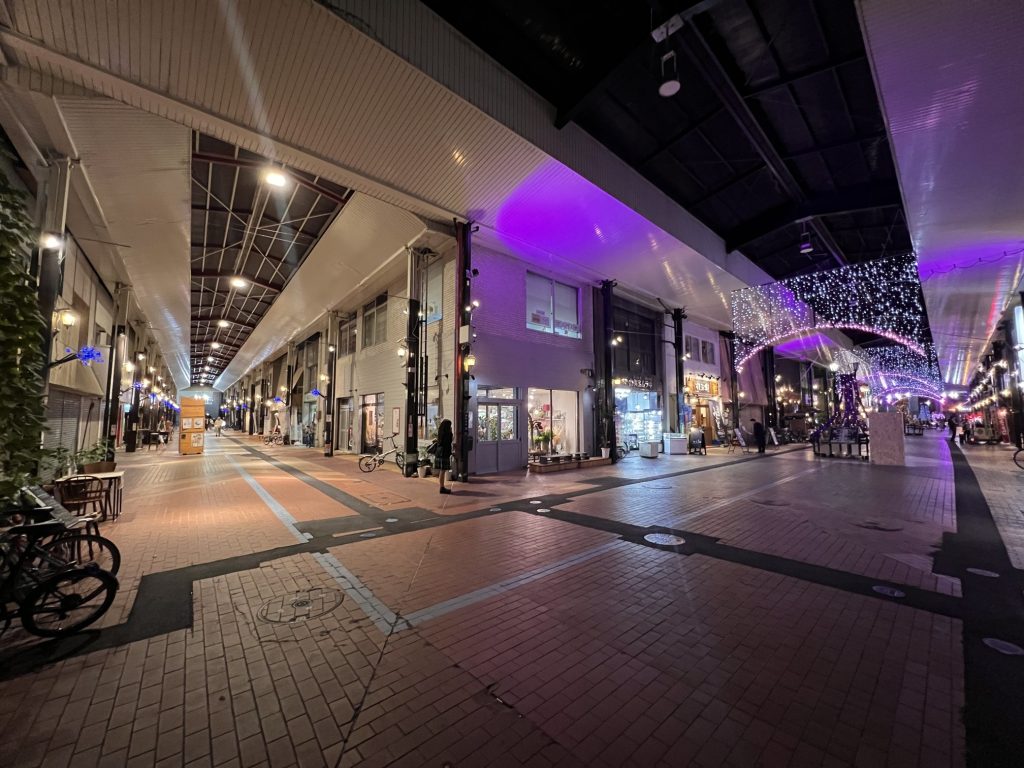
■Reflection on the Survey
The factory nightscape is the embodiment of the energy released from the industrial area—an array of countless lights, gas flares, and steam, all coming together to create a unique landscape. The factory’s nighttime presence, often seen as a prime example of light pollution, somehow evokes a nostalgic and romantic atmosphere. I had intended to explore the reasons behind this, but before I knew it, I was fully immersed in photographing the nightscape. There’s a saying, “Beauty needs no explanation,” and it seems that people are emotionally captivated by the surreal, almost sci-fi-like scene.
